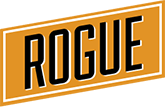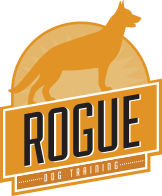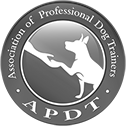![]() Group classes are currently unavailable. Please check back soon for future updates.
Group classes are currently unavailable. Please check back soon for future updates.
Frequently Used Dog Training Terms
This section explains the terms I use on a frequent basis and is the base of my dog obedience classes. There are a lot of terms used while training a dog, but these are the most common and are often misunderstood.
Food Lure
The importance of using a food lure is that it gives you the ability to guide the dog into many positions. This technique is also referred to as "Shaping." It teaches the meaning of conditioned reinforcers like "Good" and the no-reward marker, "Eh-eh" or "Hey".
How to Use a Food Lure to Train Your Dog
1) Load several treats in your hand but do not allow the dog to see you do this. This process is frequently referred to as "Baiting your hand."
2) With your closed hand, present it to the dog at nose level and allow him/her to sniff.
3) Slowly move your hand in a fashion that will get him/her to move with your hand.
4) The moment his/her nose attaches to your hand, say "Good" then give the treat.
5) If the nose falls away, give the no-reward marker, and turn away from the dog with the treat. Try again and if his/her nose continues to fall away, go to a less distracting environment, slow the movement of your hand, and/or use smellier treats.
6) Increase the attention level by having your dog follow your hand for longer periods of time and use more complicated movements.
Release Cues
A release cue is a command used to mark the end of a behavior. It is important to let the dog know when the desired behavior is complete. "OK" is a common release cue.
Shaping the Release Cue for the Best Results
1) Bait your hand.
2) Approach the dog and stop 3-4 feet away.
3) Say the dog’s name. If there is no response, intrigue him/her to come over with kissing sounds or anything you know will get his/her attention without repeating the dog's name!
4) Once he/she gets to you, say "Good" and give them the treat.
5) Practice. There should be a 90% compliance rate before moving on to the next exercise such as introducing the next cue, performance increases, and distractions.
Adding the Release Cue to Your Training Exercises
1) Bait your hand.
2) Approach the dog and stop 3-4 feet away.
3) Say the dog’s name and then the release cue, "OK."
No response? Wait one long second then give encouragement. The importance of delaying encouraging gestures is so the dog learns that "OK" is followed by encouraging gestures that lead to praise and treats. Dogs are surprisingly efficient and they will figure out there is no need to wait for the gestures. They want the treat! Keep practicing until you achieve 90% compliance. Then you can work on improving performance by adding distractions or complicating commands.
Grading Scale
A grading scale lets you dog know its behavior is improving and helps you wean your dog off of food rewards. To implement a grading scale in your dog training routine, give higher value rewards for better performance and real consequences for non-compliance. For instance, you only give praise for a decent response when trying to improve performance and a treat for perfect obedience.
Higher Value Rewards
Using "better" treats such as a piece of hot dog or freeze-dried meat is a great way to reinforce excellent obedience to your dog training commands. A higher value reward could also mean an increase in quantity.
Consequences
Having consequences in your dog training lets your dog know when something went wrong. Simply give the no-reward maker and turn away abruptly. Typically, the dog will try to face you as if asking, "Hey, what happened?!"
Introduce Distractions
In training, you can focus on one behavior at a time with minimal distractions. Out on a walk or in the park, distractions abound and your dog may behave worse. When training your dog to ignore distractions, always introduce one variable at a time. If you overload the dog by introducing too many distractions, your training program will suffer. When distractions are present, you may need adjust how far away you are to the distractions and work under the threshold where the dog acknowledges the distraction but is still able to focus on the exercise.
Contact our certified dog trainer if you have any other questions about dog training terms used in our canine obedience lessons.



